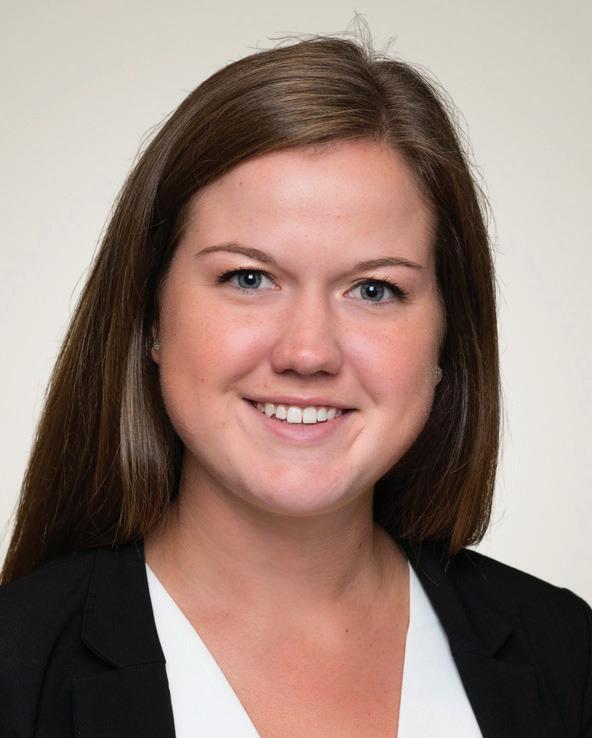

INSIDER

Brandon Cawley, CFA® Director of Investment Management Brandon.Cawley@MWAteam.com
Q2 2025: Steady Hands in Uncertain Times
As we close out the second quarter of 2025, financial markets continue to navigate a range of headwinds—from trade policy shifts to conflicting economic outlooks to geopolitical unrest. Despite these challenges, equity markets have shown resilience, climbing what many refer to as a “wall of worry,” as investors look to the next phase of policy and the economy. At MWA, we see this volatility not as a threat, but as an opportunity to position our clients for long-term success.
Our disciplined investment philosophy and well-diversified portfolios are designed to weather a range of economic scenarios. While headline-driven markets can shake short-term confidence, our focus remains on consistent, quality returns, achieved through strategic allocation and disciplined adjustments, not reactive decision-making.
Trade Policy in Focus: Navigating Tariff Turbulence
Market turbulence picked up sharply on April 2nd following the administration’s announcement of an aggressive new tariff policy. Deeper analysis raised concerns about the structure of individual tariff levels and obscurity surrounding the selection of certain target nations. Many investors viewed the proposal as a reflection of the administration’s underlying perspective on economic policy and international trade. Markets quickly priced a highly adverse scenario—resulting in market stress not seen since the COVID selloff of 2020.
Just as in 2020, expectations of a severe economic shock resulted in a brief contraction of equity pricing. Investor sentiment began to recover as subsequent announcements from the administration clarified the scope and scale of the tariffs. Although volatility remained elevated throughout April, markets ultimately stabilized and posted gains to close the quarter.
Estimates of Department of Government Efficiency (DOGE) cost-cutting measures were also scaled back from the originally proposed $2 trillion to a range of $100–$200 billion. With this pivot, the risk of significant public sector job losses has diminished, and the focus has shifted toward enhancing operational efficiency through technology and oversight, rather than broad layoffs.
Looking Ahead: Policy, Politics, and Market Implications
As we noted last quarter, investor expectations of the business-friendly Trump administration have evolved—with contractionary policies being at the forefront of policy focus. The “short term pain, long term gain” effort to realign trade in the United States’ interest and reduce deficit spending have,
indeed, presented near-term challenges for the market. Now, all eyes are on the “One Big Beautiful Bill Act” (1BBBA), which passed the House on May 22nd and awaits Senate deliberation. This sweeping legislation includes:
• Tax Policy: Permanent extension of 2017 tax cuts, and adjustments to the SALT deduction cap
• Immigration and Border Security: Increased enforcement funding and expanded deportation initiatives
• Social Program Reforms: Stricter eligibility for Medicaid and SNAP
• Defense and Energy: Increased military spending and reduced clean-energy incentives
Critics have expressed concern over the bill’s expansionary nature, noting its potential to increase the national debt over the next decade. Moody’s downgraded the U.S. debt rating from AAA, citing concerns that the bill could further undermine the nation’s fiscal stability. While the bill has generated debate, markets have responded positively to the prospect of greater clarity in tax policy, particularly for discretionary spending as well as individual, small business, and corporate planning.
Tensions in the Middle East escalated toward the end of the quarter but remained largely contained, prompting only a muted response from financial markets. Downside risks now appear concentrated in the persistence of high interest rates, which continue to constrain financial conditions across key sectors such as small business, real estate, and consumer credit.
Portfolio Management & Strategy Update
We continue to monitor the policy landscape and broader economic indicators closely.
One key area of focus is corporate capital expenditure. Activity in 2024 was subdued, in part due to election-year uncertainty. However, we believe the passage of 1BBBA could unlock significant investment in R&D, equipment, and infrastructure—potentially acting as a tailwind for equity markets.
Additionally, proposed regulatory reforms in the banking sector could improve credit access and boost Treasury market liquidity, supporting further economic expansion.
In anticipation of forthcoming policy changes, we opportunistically reallocated capital to take advantage of discounted equity markets. Additions to our U.S. large-cap core holdings were funded using proceeds from core bond funds. This adjustment has already shown a positive performance impact and exemplifies our proactive approach to portfolio management.
As always, we remain disciplined in our investment process and focused on your long-term financial goals. We will continue to rebalance portfolios as conditions evolve, remaining diversified and adaptive in the face of uncertainty. Thank you for your continued trust.
Our MWA Family is Growing
This year has been marked by exciting news for two members of the team. In March, Brandon Cawley, Director of Investment Management, and his wife, Tessa, welcomed their third child, a baby boy named Brooks. In early June, Devon, Partner at MWA, and his wife, Ann, celebrated the birth of their first child, a daughter named Mila.
We’re thrilled to celebrate the growth of both families and share in these incredible meaningful moments. Congratulations to Devon, Ann, Brandon, and Tessa on the newest additions to their families.



Meet Our Newest Team Member: Deletha Chiu
Deletha Chiu Implementation Specialist Deletha.Chiu@MWAteam.com
Tell me a little bit about yourself. I was born and raised in Oakland, CA, and spent much of my childhood running around Chinatown. These days, I live in San Leandro with my parents, aunt, uncle, and younger brother. With my dad being from Taiwan and my mom from Vietnam, our household is a blend of Cantonese, Mandarin, Vietnamese— with plenty of English thrown in for good measure.
I studied Corporate Financial Management and Marketing at San Jose State University and have been working in this industry for over 10 years. I look forward to working with the team and getting to know everyone better!
What do you do on a typical weekend?
I like to try out new restaurants with my friends, but, for the most part, I am a homebody and will just hang around at home. I also like to experiment with new recipes at home, so I have a plethora of baking and cooking equipment.
What is one thing about you that few people know? I make press-on nails for my friends and family.
What 3 words would you use to describe yourself? Foodie, Eclectic, & Curious.



John Layug, MBA, CFP®, AEP® Partner, Financial Planner John.Layug@MWAteam.com
The Art of Preserving Generational Wealth
The concept of “generational wealth” stretches far beyond simply leaving money to your heirs. It’s about establishing a financial legacy that grows and sustains itself, providing opportunities and security for future generations. This involves not only financial assets but also shared values, education, and an understanding of financial stewardship. Building and preserving generational wealth is an achievable goal for many, though it requires a strategic mindset, disciplined execution, and open communication.
Preserving Your Legacy
Building wealth is only half the battle; preserving it across generations presents its own unique challenges.
Effective estate planning is the cornerstone of preserving wealth. Creating a comprehensive Will dictates how your assets are distributed upon your passing. Beyond a simple will, utilizing trusts—such as living trusts, irrevocable trusts, or spendthrift trusts—can be incredibly powerful to control asset distributions, minimize estate taxes, avoid the often lengthy and public probate process, and protect assets from creditors or irresponsible spending. It’s also crucial to ensure all your accounts, including retirement accounts, life insurance policies, and annuity contracts, have up-todate beneficiary designations. For taxable investment accounts, adding “Transfer on Death” (TOD) enables you to name beneficiaries directly, and for savings/ checking accounts, this is referred to as “Payable on Death” (POD). These specific beneficiary designations are extremely important because they supersede your Will, meaning the assets will go directly to the named beneficiaries, bypassing probate. Furthermore, establishing powers of attorney for healthcare and finances ensures your wishes are honored regarding medical decisions and financial management if you ever become incapacitated, protecting both your well-being and your assets.
setting up charitable trusts. Maximizing contributions to tax-advantaged investments such as 401(k)s, 403(b)s, and 529 plans (for education savings) is key. Consider other tax-efficient vehicles like cash balance plans where appropriate, as these can offer significant tax benefits and accelerate wealth accumulation. Strategic capital gains planning also involves actively managing the sale of appreciated assets coupled with an annual tax-loss harvesting process, where you strategically sell investments at a loss to offset capital gains.

Perhaps the most critical element in ensuring wealth continues is fostering financial literacy and education for heirs. Sadly, wealth often dissipates by the third generation due to a fundamental lack of financial understanding among inheritors. Therefore, you should begin early in educating children and grandchildren about saving, budgeting, investing, and the true value of money from a young age. Communication within the family is essential; have discussions about the family’s financial values, the purpose of the wealth, and the responsibilities of stewardship, which helps to instill a sense of purpose rather than entitlement. Providing mentorship or introductions to trusted financial professionals can guide future generations to manage their inheritance wisely. The partners at MWA are willing to help.
Smart tax efficiency is vital to prevent wealth erosion over time. You should work closely with a qualified estate planning attorney and a tax advisor to understand both federal and state estate tax laws and implement strategies to minimize their impact, ranging from annual gifting to
For families with significant wealth, establishing a family mission and governance can prevent future conflicts. Consider creating a family constitution or establishing a family council. These structures formalize family values, provide clear rules for managing shared assets (such as a family business or foundation), and outline a framework for

decision-making regarding the family’s wealth. A welldefined mission helps to prevent internal conflicts and ensures that the wealth serves a collective, agreed-upon purpose, rather than becoming a source of contention. Finally, robust risk management protects your assets from unforeseen events. Maintain appropriate levels of insurance coverage, including life insurance (to provide for dependents), disability insurance (to replace lost income), long-term care insurance (to cover future care costs), umbrella liability insurance (for broad personal liability protection), and comprehensive property insurance to safeguard your physical assets.
Common Pitfalls to Avoid
Even with the best intentions, several common missteps can derail efforts to preserve generational wealth. Lack of communication around finances often leads to unprepared heirs who mismanage inherited wealth due to ignorance or a lack of understanding of its purpose. Failure to plan, such as dying without a Will or an updated estate plan, can result in assets being tied up in probate, significant and avoidable taxes, or the distribution of assets to unintended beneficiaries. Fostering an entitlement mentality by spoiling heirs can stifle their motivation, financial acumen,
and ability to manage wealth responsibly; instead, teach responsibility and the value of hard work. Ignoring taxes and neglecting proactive tax planning can result in a significant portion of wealth being lost to estate and inheritance taxes, diminishing the legacy you intended to leave. Relying on outdated plans is another pitfall, as life circumstances, tax laws, and financial situations constantly change, necessitating regular reviews and updates of estate plans and investment strategies. Lastly, allowing emotional decisions, especially those surrounding inheritances or major asset transfers, to dictate choices can be detrimental; instead, these decisions should always be based on sound planning and objective advice.
Conclusion
Building and preserving generational wealth is truly a marathon, not a sprint. It’s a continuous process that calls for strategic financial management, meticulous planning, and, most importantly, cultivating a lasting legacy of financial literacy and responsible stewardship within your family. By focusing on these core principles, you can create a robust financial foundation that benefits not just your children, but their children, and for generations to come.
Casey Cares Foundation Volunteer Day
This spring, our team spent an afternoon volunteering with the Casey Cares Foundation, an organization that supports critically ill children and their families through small but meaningful experiences—like movie nights, special outings, and cozy new pajamas. Their mission is all about bringing comfort and joy to families navigating tough circumstances, and we were grateful for the chance to lend a hand. A big thank you to Jenn Schepers for organizing such a thoughtful and impactful day.
While we were there, we helped out with the Kami’s Jammies initiative—sorting through and wrapping piles of pajamas donated, not only by our team, but churches, school children, and other organizations. This truly was a community effort and we are so grateful for the opportunity to support such an amazing cause.





Zellie Wothers, CFP®, CRPS® Associate Director, 401k Specialist Zellie.Wothers@MWAteam.com
Paying for College Without Going Broke Savings Plans, Financial Aid, and Smart Borrowing

College is one of the largest financial investments many families will ever make. With tuition, room and board, and other related expenses steadily rising, it’s more important than ever to plan ahead and explore every available option. The good news? There are several smart strategies that can help you manage the cost of higher education without compromising your financial stability.
1. Start with a 529 Plan: A 529 savings plan offers taxadvantaged growth and can be used for qualified education expenses such as tuition, books, and even room and board. Contributions are not deductible on your federal return, but earnings grow tax-free, and withdrawals used for qualified education expenses are also tax-free. Many states also offer additional tax deductions or credits for contributions to their in-state plan. Start early to maximize the power of compound growth, and consider making automatic contributions to stay on track.
2. Prioritize FAFSA Early: The Free Application for Federal Student Aid (FAFSA) is your gateway to federal grants, student loans, and work-study programs. File as soon as the application opens on October 1st each year to improve your chances of receiving aid, especially from schools with limited funds. Even if you think you earn too much to qualify, submit the FAFSA anyway—many institutions require it for merit-based aid as well.
3. Understand the True Cost of College: Don’t just look at the sticker price. The “net price” — the actual amount a student will pay after grants and scholarships — often varies widely from the published cost. Use a college’s Net Price Calculator to estimate your true financial responsibility. Also consider cost-saving strategies like starting at a community college, attending in-state schools, or enrolling in accelerated degree programs.
4. Seek Out Scholarships and Grants: Scholarships and grants are moneys that don’t have to be repaid. Encourage students to begin their search early, and revisit opportunities each year. Scholarships can be merit-based, need-based, or awarded for specific interests or demographics. Check with your high school, local community organizations, and scholarship search engines like Fastweb or Scholarships.com.
5. Use Loans Wisely: Federal student loans generally have lower interest rates and more flexible repayment terms than private loans. Direct Subsidized Loans, for example, do not accrue interest while the student is in school. Parents should carefully weigh the pros and cons of Parent PLUS Loans, which carry higher rates and can
impact their own financial future. A good rule of thumb is to never borrow more in total than your expected firstyear salary after graduation.
6. Balance Saving for College and Retirement: As much as you want to help your child, don’t sacrifice your own financial security. Retirement savings should generally take priority. Students have more options for funding college (grants, scholarships, loans), but there are no loans for retirement. Consider involving grandparents or extended family in college savings if they are willing and able to help.
7. Reevaluate Annually: Each year brings changes in tuition, financial aid formulas, and family income. Reassess your college funding strategy regularly. Keep a close eye on changes to the FAFSA, potential shifts in your financial picture, and the evolving costs associated with your student’s chosen school. This ongoing review can help you avoid surprises and make adjustments proactively.
8. Explore Work and Study Options: Part-time work or federal work-study can help students contribute to their own education while gaining valuable experience. Encourage your child to balance work with academics, but even modest earnings can help reduce the need for loans and build financial responsibility.
9. Have the Money Conversation Early: Sit down with your student and talk candidly about costs, expectations, and financial limits. Understanding the value of money, student debt, and post-graduation repayment responsibilities can help them make more informed decisions about school choice and spending habits.
10. Get Professional Advice: Saving for college should be part of your comprehensive financial plan. This type of planning can help you evaluate the impact of college expenses on your broader financial goals and develop a tailored plan that balances savings, aid, and borrowing.
With the right planning, paying for college doesn’t have to derail your financial future. Start early, stay informed, and make thoughtful, data-driven decisions to support your student while protecting your financial well-being.
Source: https://studentaid.gov/, https://www.fastweb.com/, https://www.scholarships.com/

Kara Scott, FPQP™ Director of Administration Kara.Scott@MWAteam.com
Why Make the Switch?
1. Faster Access, Less Clutter

The Shift to e-Delivery
In today’s increasingly digital world, more financial planning firms are transitioning to electronic delivery (e-Delivery) of financial statements. This shift is not just about convenience — it also supports security and sustainability.
With e-Delivery, your monthly, quarterly, or annual financial statements are available within days — sometimes hours — after they are issued. No more waiting for the mail, dealing with misplaced envelopes or unruly stacks of documents to be shredded.
2. Enhanced Security
Contrary to popular concerns, e-Delivery is often more secure than traditional mail. Paper documents can be lost or intercepted. Digital statements, when delivered through encrypted portals or password-protected systems, help reduce identity theft and fraud risks. Electronic communications via secure platforms can offer robust protection when properly used.
3. Environmentally Friendly
The move to paperless reduces waste and energy consumption. Switching to e-delivery is an easy way to reduce your carbon footprint. 830 million pages of paper are used every year to print and mail prospectuses and shareholder reports (equal to 101,000 trees every year).1
4. Everything in One Place
Most e-Delivery platforms provide online document vaults where your past statements, tax documents, and reports are stored and easily searchable — giving you 24/7 access to your financial history.
Supporting You with Trusted Partners
Our firm works closely with Osaic Wealth, Inc., our broker-dealer, and trusted financial institution National Financial Services LLC (NFS) to ensure secure and seamless delivery of your financial documents. These organizations are leaders in financial technology and client data protection, and their platforms support e-Delivery through
encrypted, easy-to-navigate portals.
If you have an account custodied with NFS, enrolling in e-Delivery can be done in minutes. Not sure how? We are here to walk you through it step-by-step.
Ready to Go Paperless?
If you are ready to enroll in e-Delivery, contact our office or log in to your client portal. Of course, you can always print copies at home whenever you need them.
We look forward to assisting you with making your financial life more efficient — and a little greener.
Semi-Annual Planning Meeting
Twice a year, the MWA team sets aside time to step back, assess progress, and realign on strategic priorities. Our recent semiannual planning meeting took place at Hayfields Country Club on a Friday, where we spent the day reviewing the first half of the year, discussing opportunities for improvement, and adjusting plans to stay focused on what matters most moving forward. The offsite setting provided a productive change of pace and a chance to think both critically and collaboratively.
In addition to the focused planning discussions, we also carved out time to enjoy the day together—sharing meals, playing a fun icebreaker game, and simply connecting as a team. With perfect spring weather and a relaxed environment, the day struck a great balance between thoughtful reflection and team bonding.


Connect With Us
Phone 410-771-5560 Fax 443-589-0330
www.mallerwealthadvisors.com
www.linkedin.com/company/mallerwealthadvisors/ www.Facebook.com/MallerWealthAdvisors
How to Reach Us
Wealth Advisory Services
Peter D. Maller, MBA, CFP®, AEP® – Founder | Peter.Maller@MWAteam.com

Matthew Aversa, ChFC® – Managing Partner, Financial Planner | Matthew.Aversa@MWAteam.com
Devon G. Gluck, CFP®, CIMA® – Partner, Financial Planner | Devon.Gluck@MWAteam.com
John E. Layug, MBA, CFP®, AEP® – Partner, Financial Planner | John.Layug@MWAteam.com
Brandon Cawley, CFA® – Director of Investment Management | Brandon.Cawley@MWAteam.com
Luke Charlton – Planning Analyst | Luke.Charlton@MWAteam.com
Cristina “Tina” Kothari, MBA, CDFA™ – Associate Director | Tina.Kothari@MWAteam.com
John “Jack” Lombardo, CFP® – Senior Planning Analyst | Jack.Lombardo@MWAteam.com
Eric McIntyre, CFP® – Senior Planning Analyst | Eric.McIntyre@MWAteam.com
Jonathan Webb, CFP®, MBA – Senior Planning Analyst | Jonathan.Webb@MWAteam.com
Louis Wilson, CIMA®, CFP® – Senior Planning Analyst | Louis.Wilson@MWAteam.com
Zellie Wothers, CRPS®, CFP® – Associate Director/401k Specialist | Zellie.Wothers@MWAteam.com
Operations and Scheduling
Mary Goles, FPQP™, aPHR® – Director of Operations | Mary.Goles@MWAteam.com
Administrative Support and Implementation
Kara Scott, FPQP™ – Director of Administration | Kara.Scott@MWAteam.com
Denise Poferl, FPQP™ – Senior Implementation Specialist | Denise.Poferl@MWAteam.com
Jennifer Schepers – Implementation Specialist | Jennifer.Schepers@MWAteam.com
Deletha Chiu – Implementation Specialist | Deletha.Chiu@MWAteam.com
Marketing and Client Experience
Jaida Maller – Lead Marketing and Communications Specialist | Jaida.Maller@MWAteam.com
Securities and investment advisory services offered through Osaic Wealth, Inc, member FINRA/SIPC. Osaic Wealth is separately owned and other entities and/ or marketing names, products or services referenced here are independent of Osaic Wealth
Osaic Wealth and its representatives do not provide legal or tax advice. You may want to consult a legal or tax advisor regarding any legal or tax information as it relates to your personal circumstances.
Branch address: 201 International Circle, Suite 100, Hunt Valley, MD 21030
Opinions expressed are those of Maller Wealth Advisors and not necessarily those of Osaic Wealth. Forward looking statements may be subject to certain risks and uncertainties. Actual results, performance, or achievements may differ materially from those expressed or implied.
